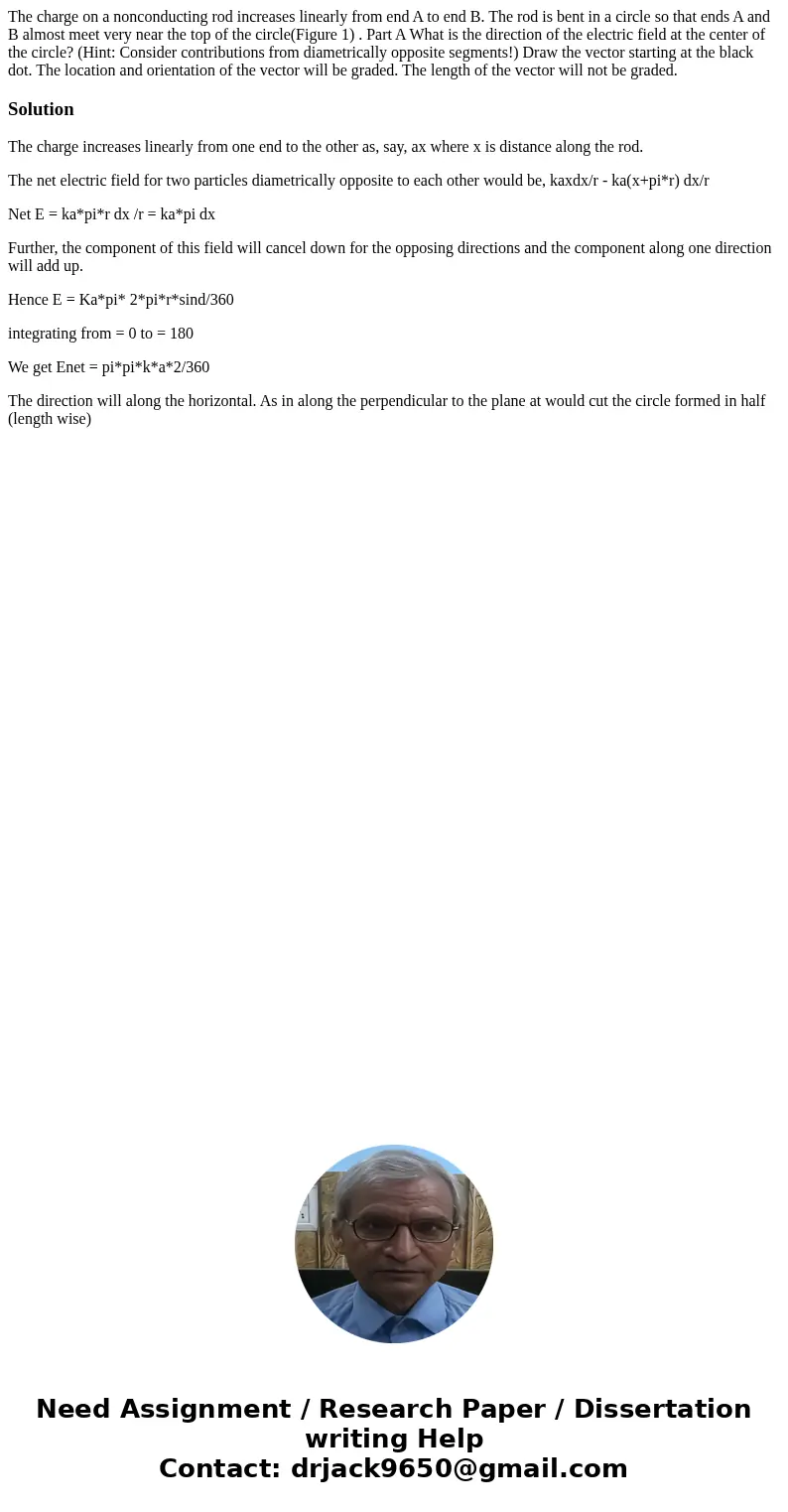The charge on a nonconducting rod increases linearly from en
The charge on a nonconducting rod increases linearly from end A to end B. The rod is bent in a circle so that ends A and B almost meet very near the top of the circle(Figure 1) . Part A What is the direction of the electric field at the center of the circle? (Hint: Consider contributions from diametrically opposite segments!) Draw the vector starting at the black dot. The location and orientation of the vector will be graded. The length of the vector will not be graded.
Solution
The charge increases linearly from one end to the other as, say, ax where x is distance along the rod.
The net electric field for two particles diametrically opposite to each other would be, kaxdx/r - ka(x+pi*r) dx/r
Net E = ka*pi*r dx /r = ka*pi dx
Further, the component of this field will cancel down for the opposing directions and the component along one direction will add up.
Hence E = Ka*pi* 2*pi*r*sind/360
integrating from = 0 to = 180
We get Enet = pi*pi*k*a*2/360
The direction will along the horizontal. As in along the perpendicular to the plane at would cut the circle formed in half (length wise)

 Homework Sourse
Homework Sourse